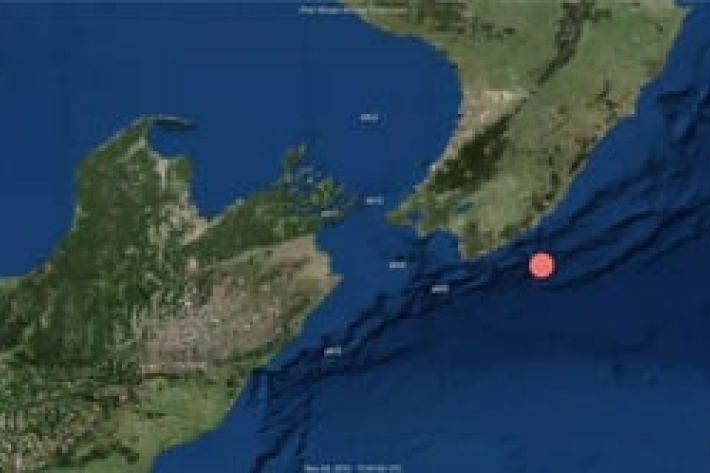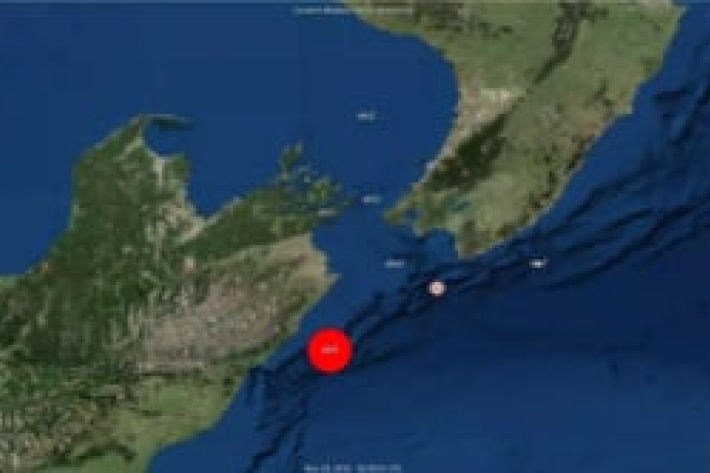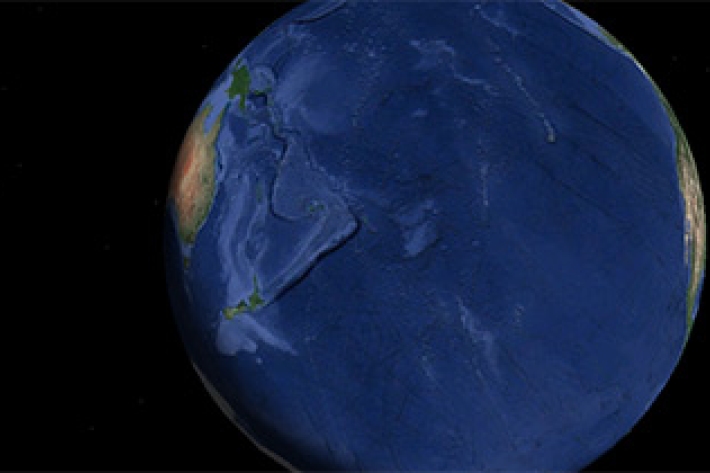-

Pilot whale calls detected by acoustic recorder stationed in Cook Strait, New Zealand
Pilot whale (Globicephala sp.) calls detected by acoustic recorder stationed in Cook Strait, New Zealand from December 2016 to January 2017. -

Cuvier’s beaked whales (Ziphius cavirostris) in Cook Strait, New Zealand
Cuvier’s beaked whale (Ziphius cavirostris) calls detected by acoustic recorder stationed in Cook Strait, New Zealand from December 2016 to January 2017. -

Biological traits, a new tool for estimating ecosystem health and vulnerability
Research ProjectBiological traits analysis is a valuable tool for measuring ecosystem function. -

Rare octopus turn up at NIWA
Media release03 July 2017NIWA’s Marine Invertebrate Collection has welcomed two extremely rare octopus that have only just been provisionally identified. -

New Zealand joins global seabed mapping initiative
News article09 June 2017New Zealand joins global seabed mapping initiative -
Scientists eavesdrop on endangered dolphins
News article07 June 2017The critically endangered Māui dolphin is getting a helping hand from scientists this month who are beginning a year-long research project to listen in on them. -

Wave hazard research
Research ProjectNIWA collects wave data, develops and verifies wave forecasting systems, and is developing and producing wave projections. -

Population modelling software
Casal2 is an advanced software package developed by NIWA for modelling the population dynamics of marine species. -

Coralline Algae
This identification guide covers the common crustose coralline algae found in central New Zealand. -

New map reveals New Zealand’s seafloor in stunning detail
News article06 June 2017 -

Critter of the week
In this blog series, we feature a new critter from our expansive invertebrate collection including pictures of specimens in their unique habitat. The blogs also feature news, links and fun facts that showcase New Zealand’s fascinating marine fauna. -

Rig shark
Research ProjectRig shark is an important inshore commercial fish species in New Zealand, and we need to understand more about their habitats, movements, nursery grounds and vulnerability to human impacts to ensure they are managed sustainably and their productivity is enhanced.
